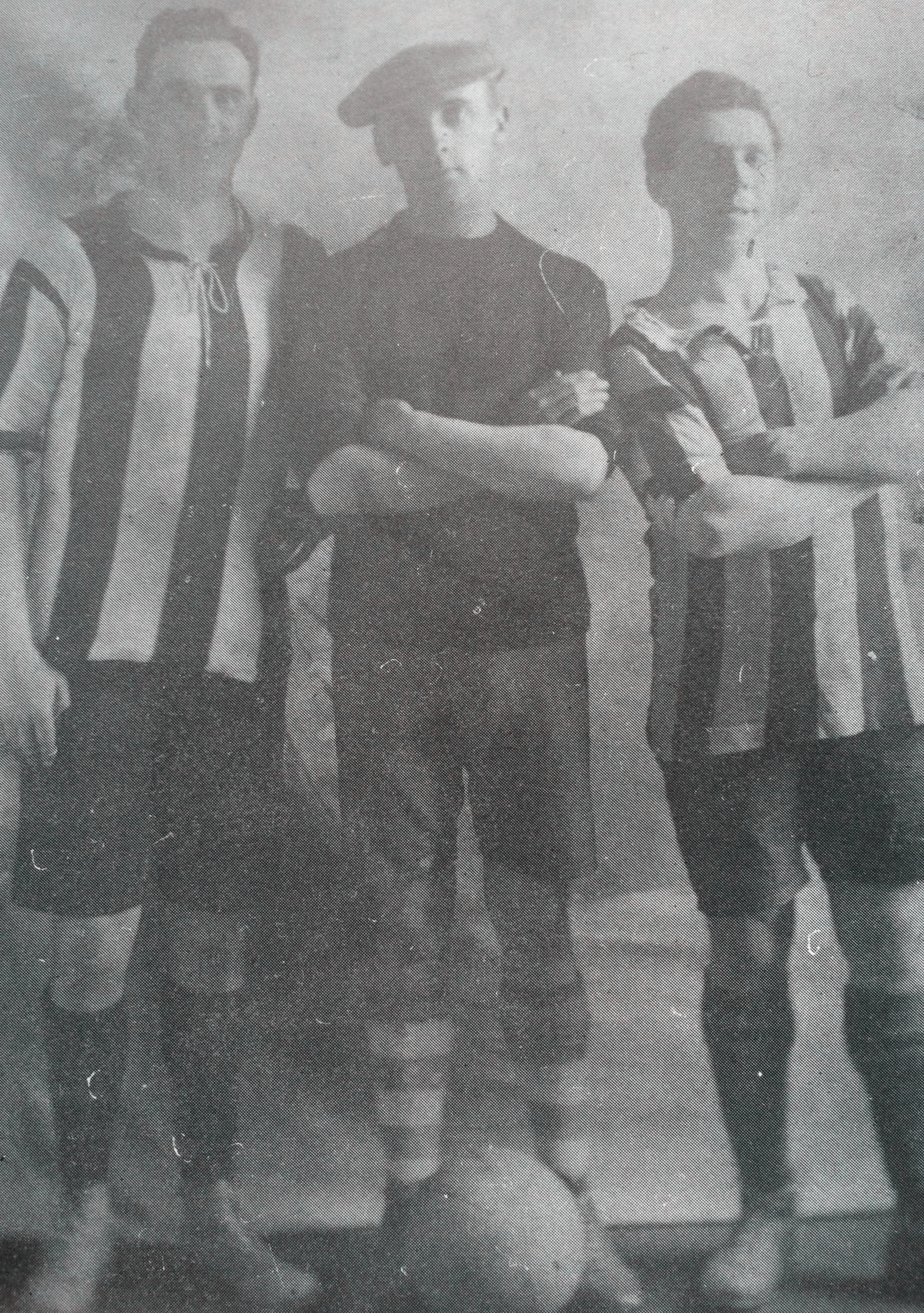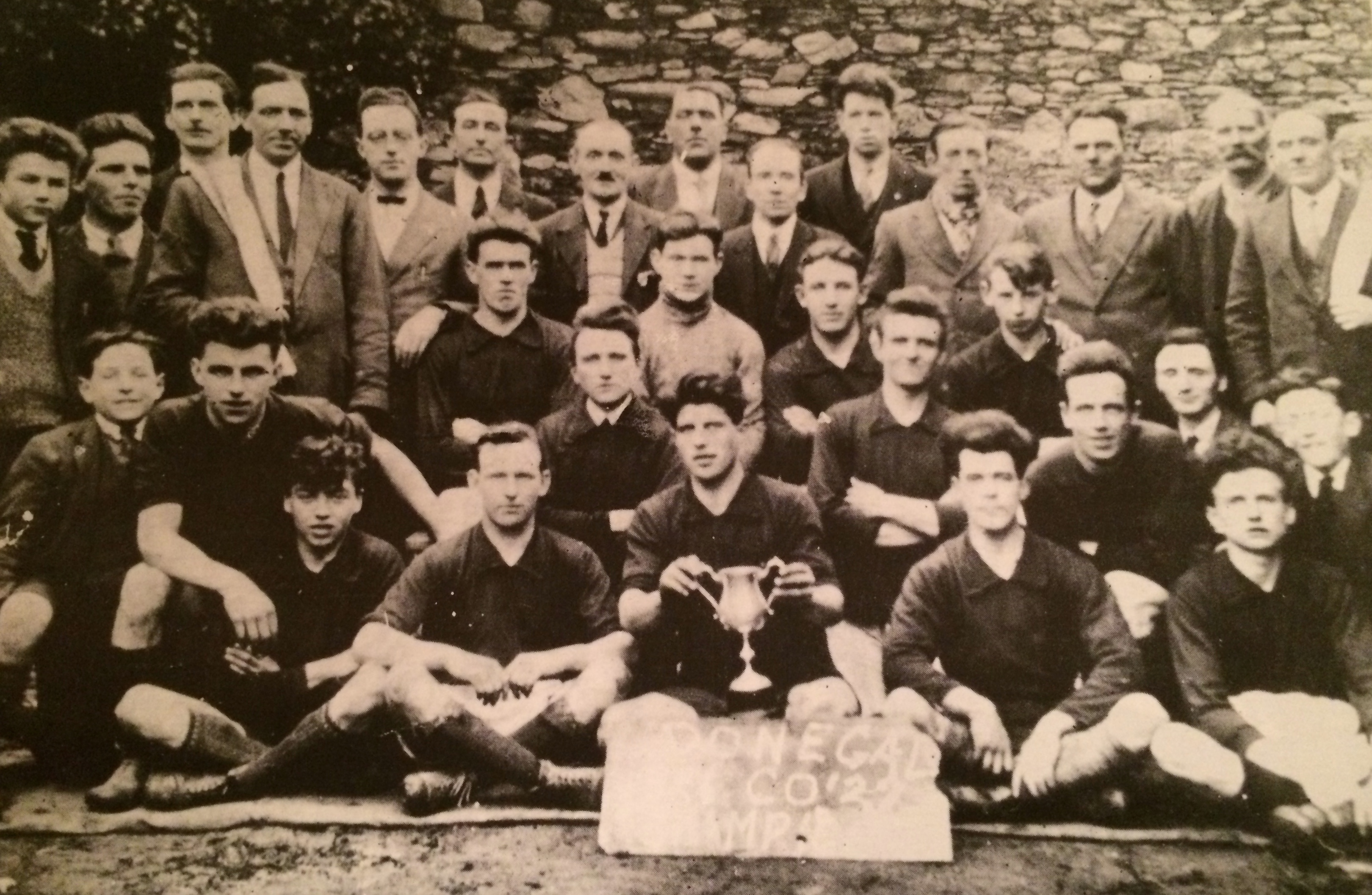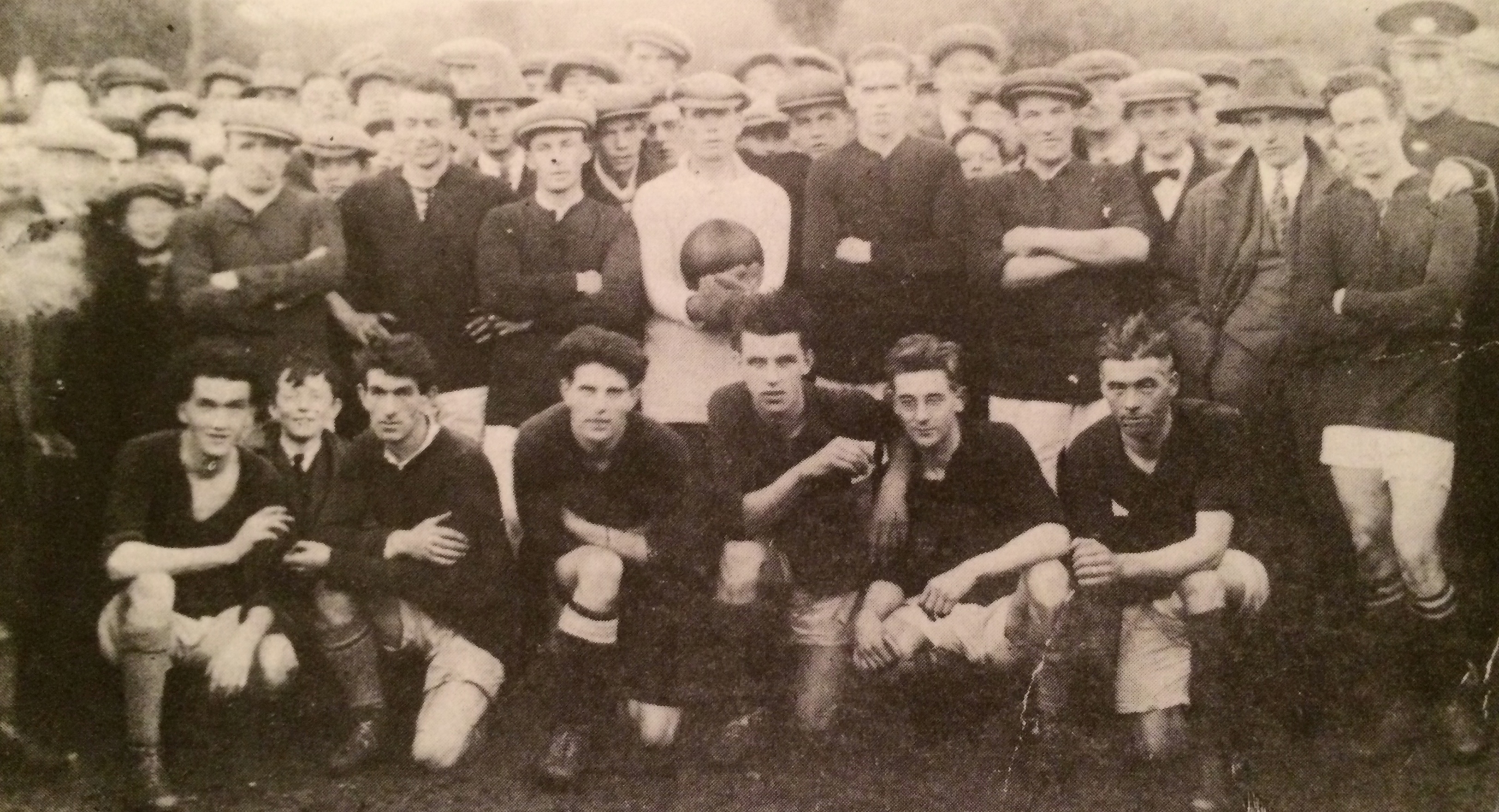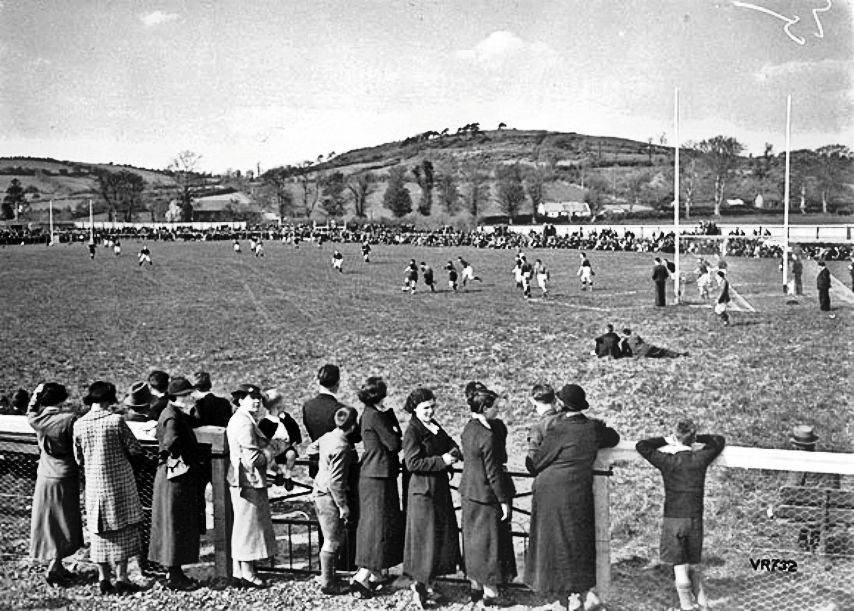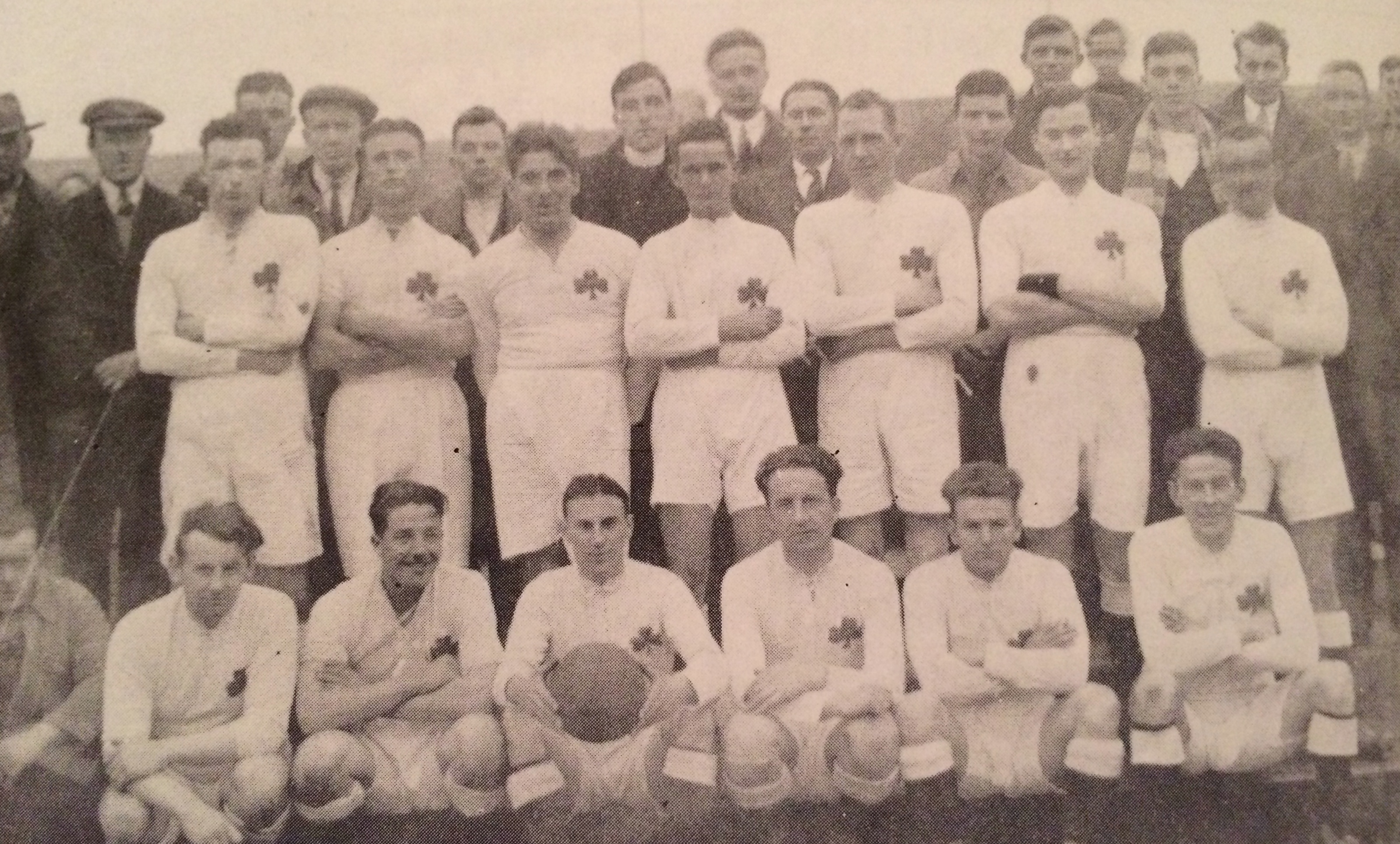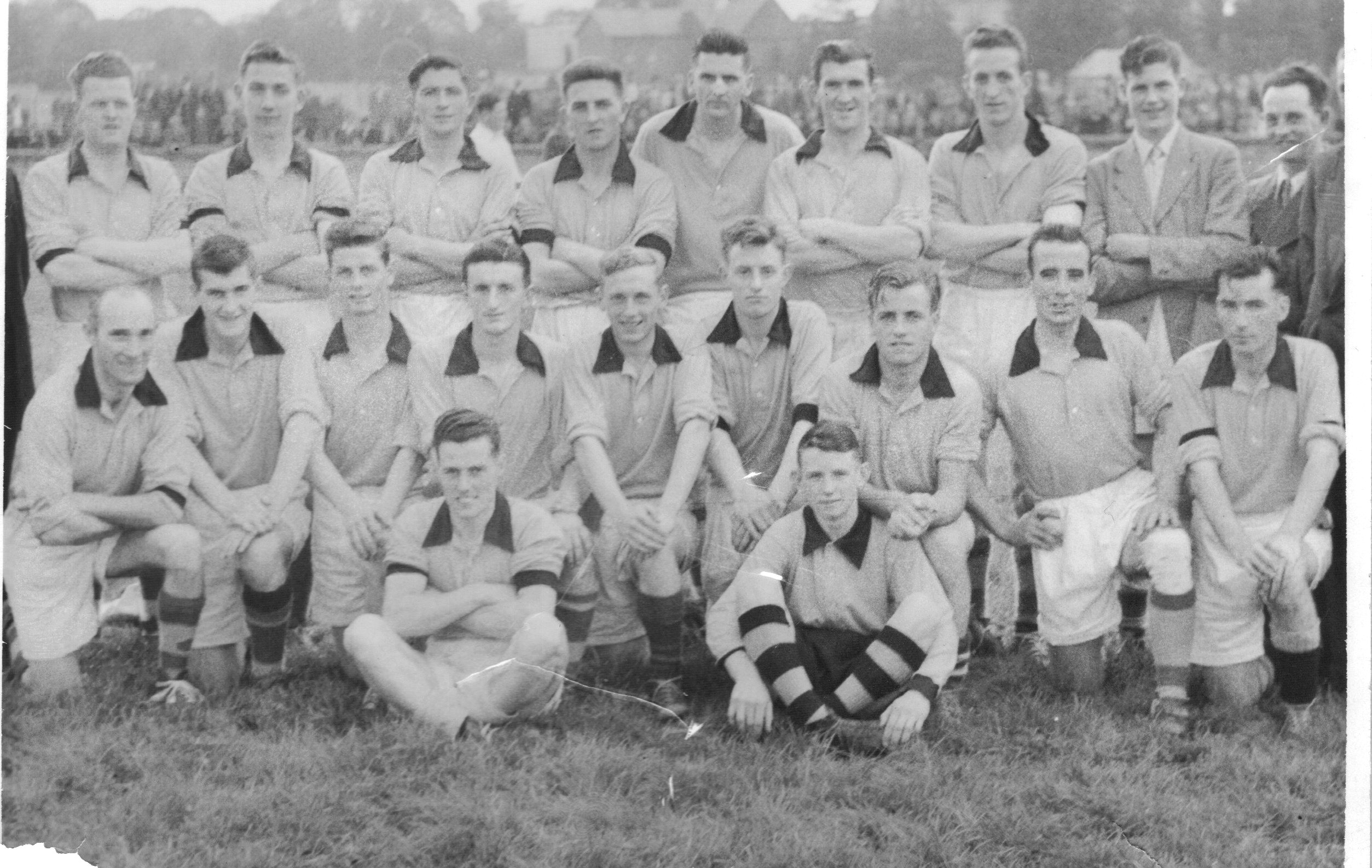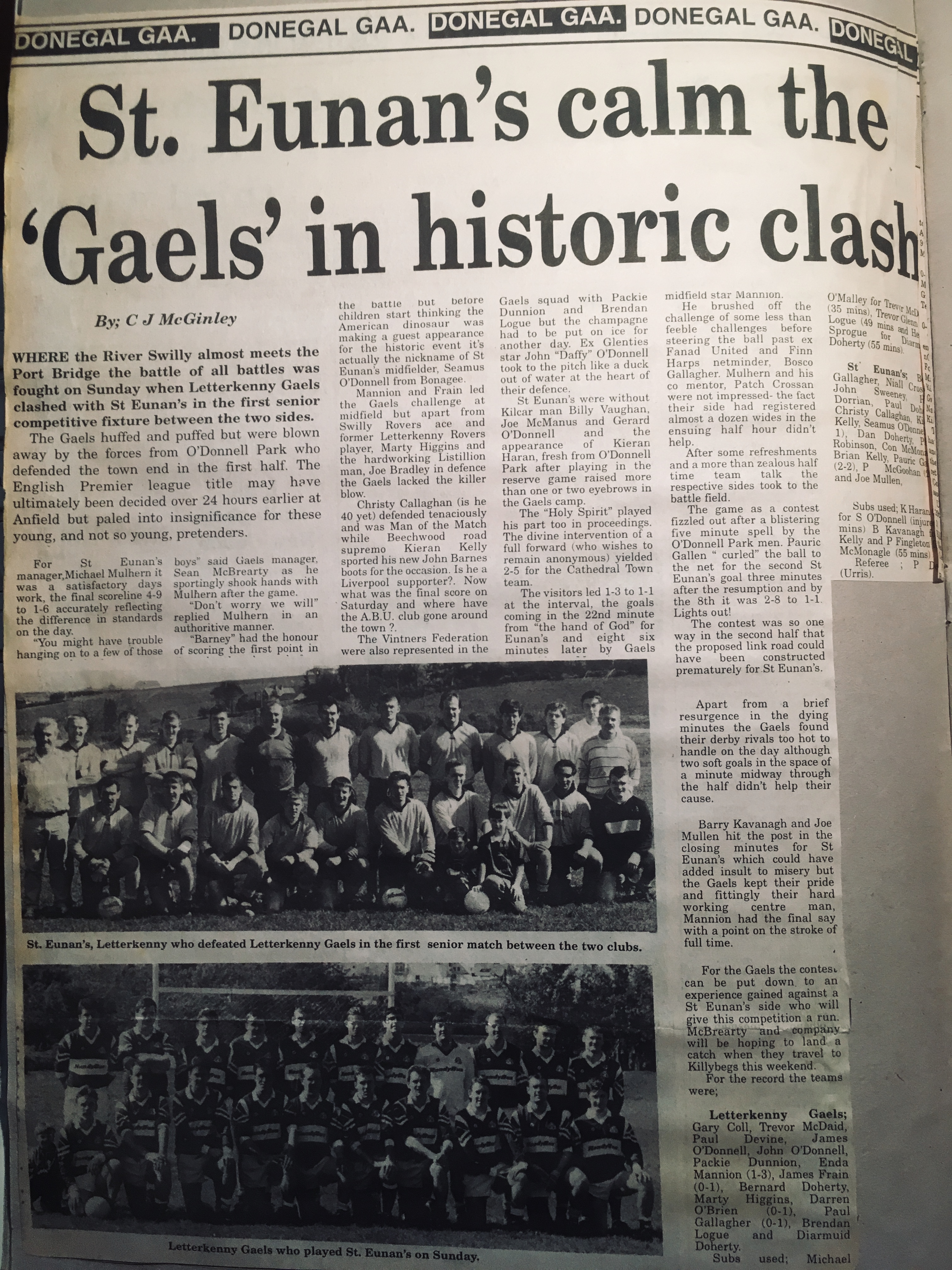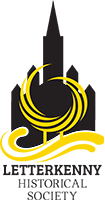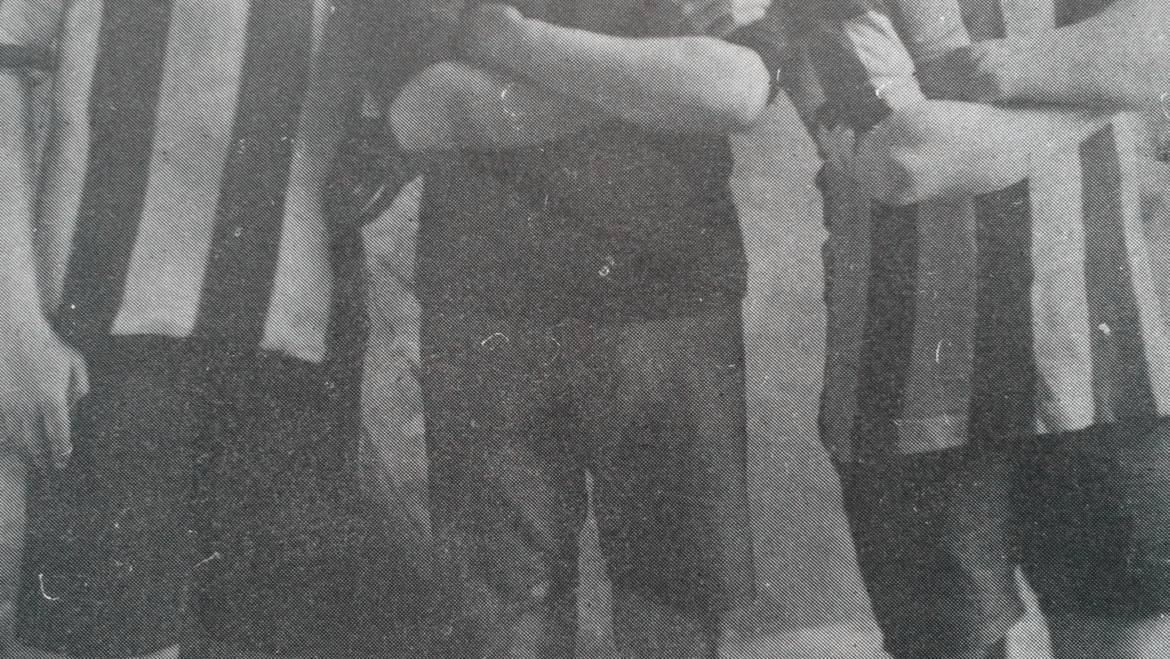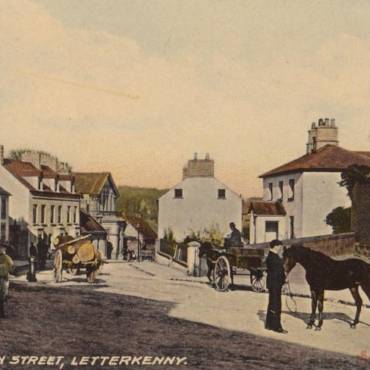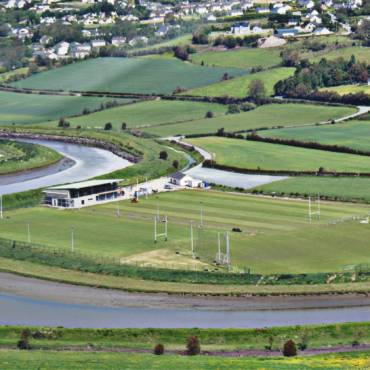A brief history of GAA in Letterkenny
As part of an overall late nineteenth century national Gaelic revival, the Gaelic Athletic Association was formed in Thurles in 1884, which set about codifying games that were being played with different rules in various parts of the country. Although attempts were made to form clubs (such as Burt Hibernians in the 1890s), it was a slow start for the new organization to penetrate into Donegal. It wasn’t until 23rd October 1905 that the Donegal GAA County Board was officially formed at a meeting in Mountcharles.
One month prior to the formation of this Board, on the 18th September 1905, a Gaelic club was established in Letterkenny for the very first time. Following a meeting in the Literary Institute, Bishop O’Donnell was chosen as patron of this “Lámh Dearg” club while Patrick Sweeney was made captain and James McMonagle vice-captain. On 26th December 1905, the club competed in a game of camán (hurling) in the East Donegal division against St. Mura’s of Fahan. The match was played on the grounds of the Asylum Hospital (Bernard McGlinchey Town Park today) drawing a sizable crowd with Bishop O’Donnell in attendance. St. Mura’s won the game 2-3 to 3 points.
The Lámh Dearg team on that momentous occasion of the first recorded Gaelic match in the town was: Patrick Sweeney, Edward Sweeney, Edward Coyle, Bernard Crampsey, James McMonagle, Lawrence Robbins, James Rodden, John Blake, Joseph Cullen, John Campbell, Joseph Harkin, E. McLaughlin, A. McClean, John McGinley, David Gallagher, James Gildea and James Peoples. (Games of hurling and football were played as 13-a-side, and would remain so until the 1930s).
Due to factors such as the popularity of soccer, arranging transport to games and also organizational difficulties within the County Board, the GAA movement slipped into decline throughout Donegal after 1907. However, teams still were in evidence in Letterkenny playing in occasional tournaments. By 1911, two new clubs had replaced Lámh Dearg, “Tirconaill” and “Faugh A Ballagh” (sometimes referred to as the Fag a Bailes) and by 1913, there was even a “Robert Emmet GFC” representing Letterkenny. On 29th March 1916, “The O’Donnell’s Gaelic Football & Hurling Club” club was established with Rev. J.J. O’Doherty as President, Edward McDaid as Secretary and Patrick Dawson as Treasurer. All of these clubs were short-lived however.
By 1919, a new attempt at revitalizing the GAA took place, with a new County Board put in place following a meeting in Letterkenny with a county championship set up, to be played on a league basis with the county divided up into East and West divisions. “Letterkenny” competed against Castlefin, Killygordon, Clady and Rabstown in the East Donegal section of the County Championship.
In 1924, two new clubs were established in Letterkenny, the “Geraldines” and “Letterkenny Rovers”. As well as competing in the championship, both of these teams competed in the Dr. McGinley Cup (or East Donegal Hospital League) against teams from Raphoe, Stranorlar, Ballybofey, Clonleigh and Carrigans. The rivalry between both town clubs was quite fierce with many matches between them developing into hard-hitting and raucous affairs.
Both of these clubs shared a pitch at Ballymacool, known locally as the Burn Field but sometimes reported in the press as either ‘Geraldine Park’ or just simply ‘Ballymacool Grounds’. The 1925/26 season saw mixed fortunes for the Letterkenny clubs. The Geraldines won the Dr. McGinley Cup (League) without defeat while Rovers were defeated in the County Championship Final by Ardara. The Rovers team did not have long to wait for success though – the following season saw them win the County Championship. Run on a league format, victory in Newtowncunningham against Carrigans on 4th March 1927 assured them of the title with a scoreline of 1-5 to 0-3. This strong Rovers team consisted of Patrick Doherty (capt.), Michael Peoples, John Harvey, William O’Donnell, John McManus, Anthony Gallagher, Frank Larkin, Jack Doherty, William Strain, William Roarty, Hugh McGlynn, Patsy Sweeney, Phil Doherty and John Larkin.
However, following a celebration dance in the Central Hotel, it was reported that several players from the the victorious team were leaving for America. Interest in the game was waning as a result of long intervals between matches and only four months after securing the county championship, the Letterkenny Rovers GAA team broke up. The remaining Rovers team decided to amalgamate with the Geraldines to form a new club called “St. Eunan’s GAA Football Club” in 1927.
This newly formed St. Eunan’s club played their games at John Crumlish’s field in Ballymacool making their debut against Killygordon on 17th August 1927. This club was in existence for only a short time though, playing 15 matches, mostly friendlies against Killygordon and Dungloe, and accruing a sizeable debt of £22 in unpaid liabilities before it ceased to be in June 1928.
Two years later, on the 19th February 1930, a meeting was held in the Catholic Club Rooms consisting of ‘representatives of An Garda, Tirconaill Mental Hospital and former members of the GAA in the town’ with the view to reform the old St. Eunan’s club and take on all liabilities and assets of the former club. Mr. D.F. Ryan was elected chairman of the new club and Anthony Gallagher from Sallaghgraine was chosen as the club captain. The committee chose as their colours ‘black jerseys with amber hoops and black stockings’ and they approached the Asylum Hospital Committee for the use of their field for matches. The first match for the new St. Eunan’s Club took place on 2nd March 1930 on the grounds of the Asylum Hospital, losing to Killygordon 1-4 to 3 points. A year later, the club secured the hiring of a playing field in Glencar from Mrs. Margaret Kelly of Bomany where they played their matches until 1937. After renovations to the grounds, this field became known as ‘Gaelic Park, Glencar’ and even hosted the Ulster Junior Football Final in 1933 between Donegal and Derry.
In 1931, St. Eunan’s first success came. The hurling team won the Derry People Cup that year while a new club in the town also made its bow. “St. Pat’s” were formed in April 1931, with former Letterkenny Rovers player Frank Larkin their star player. The first match between the town rivals took place on 24th May 1931 at Gaelic Park, Glencar, a venue that was shared between the clubs. St. Eunan’s achieved moderate success in their early years, winning the Minor Championship at Rashedoge in 1932 and their hurling team won the Championship of the Northern Area in October 1933. The club soon wanted a permanent residence rather than hiring a pitch though and under the chairmanship of John Crumlish and through the tireless work of club secretary John Hourihane, they bought a 7-acre field that was formerly part of the Boyd estate in Sallaghgraine for £300 from the Urban District Council and called it “O’Donnell Park”, after the former Bishop of the Diocese, Patrick O’Donnell. At the official opening of ‘the county’s premier Gaelic stadium’ on 2nd May 1937, Antrim hurlers defeated Donegal by 5-5 to 2-2 and Armagh defeated the Donegal footballers 2-5 to 1-7.
In this same year, another new club was formed in the town. St. Pat’s had broken up in 1932 and, after a short lived attempt to form a new ‘Letterkenny Rovers’ a year later, a meeting was held in O’Donnell’s Hotel on 16th September 1937 attended by 53 people. John Flynn was elected as Chairman of this new club of “St Columba’s” and they did not have long to wait for success. In March 1938, they secured the Dr. McGinley Cup with an unbeaten record against St. Eunan’s, Porthall and Ballybofey, taking the cup back to the town for the first time since the Geraldine’s success in 1926.
GAA Football in the town was now going through a purple patch with a sensational result at the time occurring in O’Donnell Park in May 1938. In front of a crowd of 1,100 people, a Letterkenny select team comprised of players from both town clubs heavily defeated a fancied Donegal county team 4-8 to 1-5. Up until this point, very few Letterkenny men had represented the county, but opinions were changed after this memorable encounter.
Despite the initial early success of St. Columba’s, the club broke up in the early 1940s. The sole remaining GAA club in the town, St. Eunan’s, lost three Championship county finals in 1944, 1946 and 1947 against an all-conquering Gweedore side before finally securing the Dr. Maguire Cup for the first time in 1948 with a 1-7 to 2-1 victory over Gweedore. By now the club were playing in a changed strip of red and green horizontal stripes due to fabric shortages during the war and although they made it to three further county finals, the club had to wait until 1956 to secure their second championship. Fittingly this was the same year that they returned to their original colours of black and amber. Since then, the club has won at least one senior county championship per decade and, since the late 1990s in particular, has become a dominant force in county club football.
Since the disbandment of the St. Columba’s team in the 1930s, the tradition of having rival clubs in the town had waned for approximately fifty years. In 1996 though, a new club, “Letterkenny Gaels”, were formed to cater for the rising population in the rapidly expanding town. The eagerly anticipated first clash between the two clubs came in a league game of Junior Football on 20th April 1997 in which St. Eunan’s won on a scoreline of 4-9 to 1-6. Initially Letterkenny Gaels, with Jim Frain as their first chairman, played their games at various venues, (Heaton’s Field at the Port Road, the grounds of Letterkenny Rugby Club at the Silver Tassie and at Errigal College), before finding a permanent home. In 1999, along with Letterkenny Rugby Club, the club acquired land at the Glebe for the development of a GAA pitch and opened their new playing field “Páirc na nGael” in March 2008.
